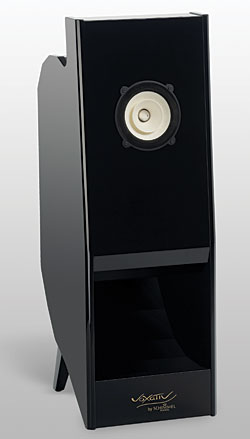| Columns Retired Columns & Blogs |
Oh, boy, another $30K speaker, what a bargain. I love Art Dudley, but this kind of thing I do not need. It is what is wrong with audio today, and what has turned what used to be a hobby into a garish exercise in conspicuous consumption. I'm sorry to be a crab, and my comment will undoubtedly bring some cleverly snide response, but I still remember having a great time with my Dynakit Mk. III tube amps, for which I paid around $120 each, even in the 1980s. I thought audio was a lot more fun back then.
 There are, of course, other loudspeakers that can do more or less the same thing: an Altec 755 in a wide baffle, an Audio Note AN-E, a Naim IBL or SBL, a whole cornucopia of horns. These alternatives have their own unique strengths: deeper, more forceful bass (the Audio Note, the Naims), greater power handling (the Naims, the Altec), and so forth. What the Voxativ Ampeggios had that those speakers don't was the sort of spatial presentation that some audio perfectionists cherish: a deep and sizable chunk of pure, open sound, mined from the original quarry and transported to the listener's room, "air" and all. The Voxativs, more than any other flea-watt-friendly speakers with which I'm familiar, did the soundstaging thing. In spades.
There are, of course, other loudspeakers that can do more or less the same thing: an Altec 755 in a wide baffle, an Audio Note AN-E, a Naim IBL or SBL, a whole cornucopia of horns. These alternatives have their own unique strengths: deeper, more forceful bass (the Audio Note, the Naims), greater power handling (the Naims, the Altec), and so forth. What the Voxativ Ampeggios had that those speakers don't was the sort of spatial presentation that some audio perfectionists cherish: a deep and sizable chunk of pure, open sound, mined from the original quarry and transported to the listener's room, "air" and all. The Voxativs, more than any other flea-watt-friendly speakers with which I'm familiar, did the soundstaging thing. In spades.






































